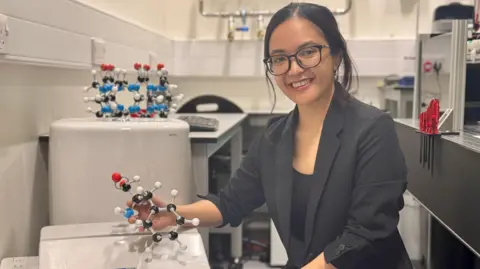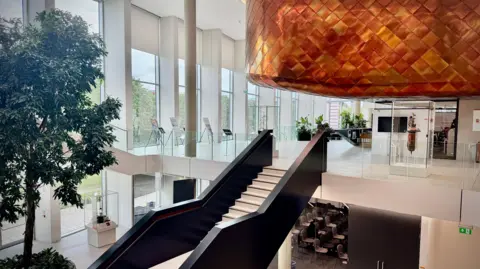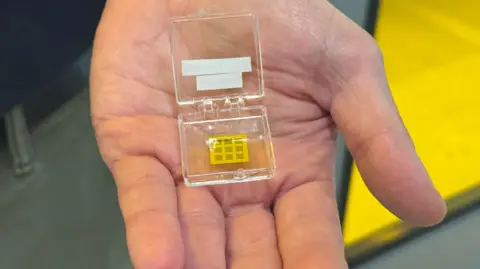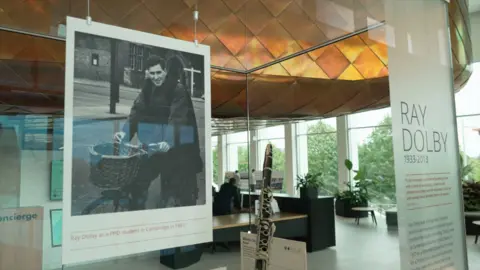New lab where scientists are trying to make history
 BBC
BBCFrom the structure of DNA to the electron and neutron, some of the most significant scientific discoveries have been made in the Cavendish Laboratory.
Founded 150 years ago to house the physics department at the University of Cambridge, the lab has relocated twice to ensure its facilities kept pace with its science.
On Friday, it opens in the Ray Dolby Centre, named after the former Cambridge student who brought us surround-sound.
A team of 1,000 scientists are now hoping to etch their own names in history inside the new base.
The Ray Dolby Centre is as different to the original Cavendish Laboratory as a building can be.
Canopies covered in copper fish scales hang above the staircases and exhibits of famous instruments are displayed in glass cases.
Away from the entrance lies a warren of 173 laboratories. In many, the air is constantly filtered, light is controlled and there is no vibration.

These controls are vital to the experiments now conducted here, but Dr Dave Ellis, head of nanofabrication, says those sensitivities also made moving the laboratory much harder.
"Some equipment, like the optics tables, can't be tilted at all, so there were rough patches of road which we had to resurface to make the journey smooth," he says.
"The removals company also developed new techniques to ensure the lorries stayed stable when the equipment was moved.
"Everyone went to great lengths to make it a success."

In one of the new labs, PHD student Sarah Sibug-Torres is trying to develop a toilet that uses gold and lasers to analyse urine - a process called Surface-enhanced Raman spectroscopy.
"Everyone uses a loo," says Ms Sibug-Torres, "but not everyone realises the urine we flush away contains thousands of different types of molecules.
"[They] can give clues about whether someone is developing disease or responding to medication, for example.
"Each type of molecule vibrates in a different way, so, unlike with a traditional urine dip test, we can identify these molecules even in very low concentrations."
Ms Sibug-Torres hopes her work will enable early diagnosis and better all-round health in future.
 The Cavendish Laboratory
The Cavendish LaboratoryOther teams at the Cavendish are working on ways to use light to improve endoscopic tests for oesophageal cancer.
They are also creating components to help the CERN Collider in Switzerland, which aims to detect new particles furthering our understanding of dark matter in space.
Dr Stefan Diesing is developing new solar panels to power the satellites that we rely on in space for GPS, communication and earth monitoring.
"In space, unlike on earth, there's no magnetic field to shield you against all the things that are whizzing around," he explains.
"Those particles can damage the solar panels, so they don't last as long.
"We're developing a much more resilient material which is also very thin."
Dr Diesing says these new panels could one day enable solar farms in space, which capture energy and beam it back for use on earth.


The building has been designed so research teams collaborate more and share ideas.
The head of the Cavendish Laboratory, Prof Mete Atatüre, says interaction is critical but it was much harder in the old building.
"I loved the old lab, but it prioritised lab space over everything else," he explains.
"Here, you bump into people all the time and discuss your work - and that can lead to something else."
While some features are deliberately different to the previous lab, others protect tradition.
In the coming weeks, some of the old blackboards will be installed.
Prof Atatüre insists it is important that scientists still work through problems by "getting chalk on their hands", much like their predecessors.

In addition to funding from the University of Cambridge, the Ray Dolby Foundation gave £85m to the project.
Ray Dolby was a PHD student in Cambridge in the 1950s and went on to invent the world famous surround-sound system that transformed music and movies from the late 1970s.
The government has also provided £75m to keep the building as a national resource open to scientists from across the UK.
It is also expected to inspire both students and the public alike.
With the Cavendish Laboratory being home to 31 Nobel Prize winners, it is hoped this new facility will soon have a few history-makers of its own.
Follow Cambridgeshire news on BBC Sounds, Facebook, Instagram and X.
